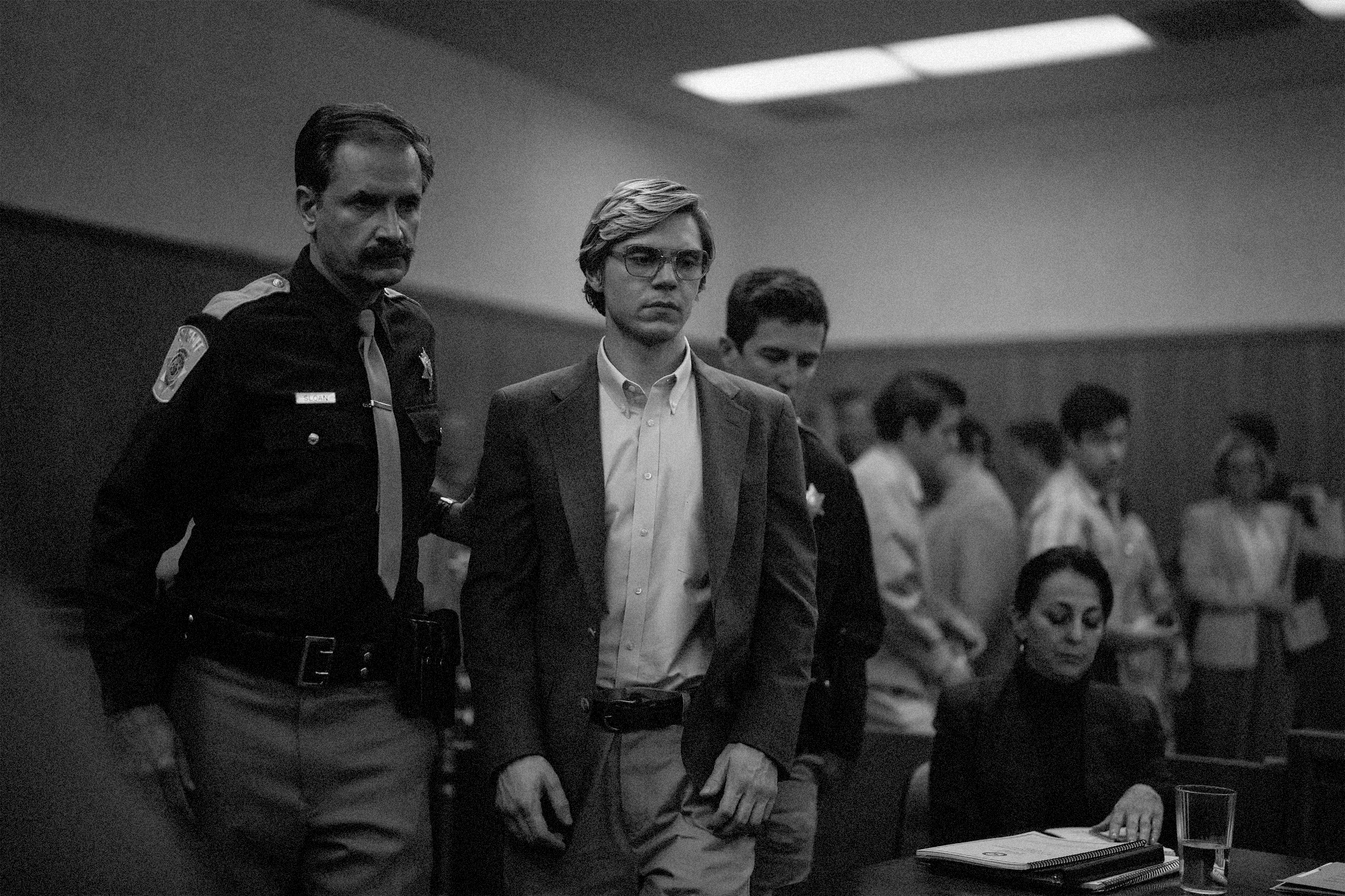Now reading: How has "DAHMER" affected Evan Peters's mental health?
The Emmy winner reflects on pulling off his harrowing,
unforgettable portrayal in the Netflix limited series—and the struggle to leave it behind.

FILM • RYAN MURPHY • JANUARY 8 2025
If you’ve seen Dahmer, you can understand why. Created by Ryan Murphy and Ian Brennan, the show depicts the childhood, adolescence, and unconscionable adulthood of one of our most notorious and deadly serial killers—all while examining Jeffrey Dahmer’s intersections with racism and homophobia in American culture, and the ways in which bigotry kept him out of custody. Peters’s portrayal maintains a discomfiting edge, committed to a stark naturalism—an unusual quality for a Murphy production—and off-kilter in a way that never feels gimmicky, but is always terrifying. The preparation is in the performance. No wonder Peters is still struggling to shake it off.
After wavering on taking the part to begin with, Peters felt compelled by the deeper social mission that Murphy presented, and in his research—watching and listening to interviews with Dahmer, reading and studying other materials—he unlocked a narrative arc that he could latch on to. “It was really a deterioration, and this worsening compulsion, worsening alcoholism, that led to this downward spiral—the ‘long slide down’ as he put it,” Peters says. “The plotting out of that was going to be difficult, but I felt up to that challenge to try to make sure that that was all in order before we started shooting.” He credits his work on American Horror Story, playing a range of grisly and damaged characters, for introducing him to the kind of prep needed for such a process. He also reveals that, rather than receiving a handful of scripts for initial consideration, as is customary, Murphy sent him seven completed episodes for a fuller picture of the demands of the role.
Peters has been in the Murphy family for some time now; he’s used to the creator’s hyperstylized tendencies, his campy flair, as are many behind-the-scenes artists who work with Murphy again and again. For this project, though, Peters asked Murphy to strip all that down—to go for a matter-of-fact, simplistic telling of the story. The relative emotional intensity—and disturbance factor, even for Murphy—yielded exactly that kind of muted tone, as well as an especially sensitive set, with “everyone checking in with [one another],” Peters says. The shift also introduced some new collaborators, like makeup artist Gigi Williams, Oscar-nominated for Mank and known for gritty realism. “I’m not the Ryan Murphy type,” Williams says with a laugh. “But I wanted people to feel claustrophobic and sweaty and dirty and kind of pushed into a corner, and I think we achieved that.”
The show takes time to depict Dahmer as a kid and younger man, before his spiral—his dysfunctional family life and traumatically formative experiences. Often, scenes of Dahmer very much in his killing phase will take place in the same episodes as those flashbacks. “Once we started shooting, it would turn into chaos and you wouldn’t know what time period you were in on what day,” Peters says. “A huge credit to Gigi and [hairstylist] Shay [Sanford-Fong] for helping keep that all on track.” This included playing with the evolution of the hair—Murphy’s requested starting point was a “summer blond,” says Sanford-Fong, who’s worked with him for years—and facial features. “I gave him dark circles and red-rimmed eyes like he was high, a lot of sweat I painted on, I flicked on five o’clock shadow in two different colors,” Williams says. “People would say to me, ‘Do you have any makeup on him?’ I’d say, ‘Oh, my God, probably 45 products!’” In terms of characterization, Peters believes Dahmer was not born a monster. “It’s really just to try to understand that there were many points in his life where it seemed like this could have been stopped,” he says. “I wanted to make sure that there was an innocence to him before he did anything wrong.” Investing in that origin story proved practically vital for Peters, as he mapped out a massive transformation. But it didn’t make getting to the ugliest stuff any easier—intimate glimpses of Dahmer grooming his victims, then actually committing murder. Peters’s visceral performance does not shy away from the horror, but the actor found it difficult to separate his own feelings about the scene from the character’s, since they couldn’t be further apart. “Sometimes it was a case of having the emotion and then swallowing it,” Peters says. Since public material of Dahmer mostly consists of the period after his arrest, he didn’t even have a clear model to work off. Only his own interpretation.